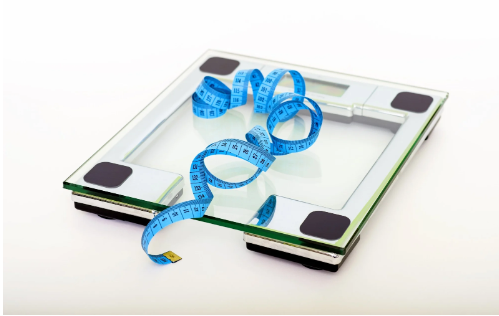In the world of measurements, accuracy is paramount. Whether you’re a chef perfecting a recipe, a jeweler measuring precious metals, or a scientist conducting experiments, having a properly calibrated scale makes all the difference. This blog post will guide you through the nuances of scale calibration, ensuring that every measurement you take is precise and reliable.
The Importance of Accurate Measurements
Accurate measurements are crucial in numerous industries and daily activities. Imagine baking a cake without measuring ingredients correctly; the results could be disastrous. Similarly, inaccurate measurements in pharmaceuticals can lead to ineffective or harmful medication doses. In commerce, even a small error in weight can result in significant financial discrepancies. Thus, the importance of accurate measurements cannot be overstated.
Understanding the Need for Calibration
Calibration is the process of ensuring that a scale provides accurate readings by comparing it with a known standard. Over time, scales can drift from their original settings due to regular use, environmental factors, or simply due to the passage of time. Without calibration, scales may provide inaccurate readings, leading to errors in various applications.
In business, uncalibrated scales can lead to financial losses, customer dissatisfaction, and legal issues. In healthcare, inaccurate measurements can compromise patient safety. Understanding the necessity of calibration helps underscore its importance in maintaining precision and reliability.
Types of Scales Requiring Calibration
Different industries utilize various types of scales, each needing regular calibration. Here are some common scales:
- Digital Scales – Widely used in kitchens, labs, and industrial settings.
- Analytical Balances – Essential in scientific research and pharmaceutical labs.
- Mechanical Scales – Often found in grocery stores and markets.
- Spring Scales – Used in educational settings and basic scientific experiments.
Each type requires specific calibration techniques to ensure accurate readings.
Step-by-Step Guide to Calibrating Your Scale
Digital Scales
- Turn on the Scale – Ensure it’s on a stable surface.
- Zero the Scale – Press the tare button to reset the scale to zero.
- Use Calibration Weights – Place a known weight on the scale and adjust according to the manufacturer’s instructions.
- Verify – Repeat the process to ensure accuracy.
Analytical Balances
- Warm-Up – Allow the balance to warm up if it hasn’t been used recently.
- Check Zero – Ensure the balance reads zero before starting.
- Calibrate with Weights – Use certified calibration weights and follow the specific steps provided by the manufacturer.
Mechanical Scales
- Adjust Zero – Use the adjustment knob to set the scale to zero.
- Place Known Weights – Place standard weights and adjust the indicator to match the expected reading.
- Verify Continuously – Regularly check with different weights to maintain accuracy.
Spring Scales
- Set to Zero – Ensure the scale starts at zero.
- Apply Known Weights – Hang known weights and adjust the scale accordingly.
- Check Consistency – Recalibrate if the scale shows inconsistent readings.
Importance of Regular Calibration
Calibration is not a one-time event. Regular calibration ensures continued accuracy and reliability. Scales can drift due to various factors such as temperature changes, humidity, and mechanical wear. Regular checks help maintain their precision, reducing the risk of errors.
Failure to calibrate regularly can lead to significant issues. Inaccurate scales can cause financial losses in business, compromise patient safety in healthcare, and lead to unreliable data in scientific research. Regular calibration is an essential practice for maintaining accuracy. Checking out the Seca medical scale, or other ones for other industries like the Jewelry sector helps ensure that your scale is always providing accurate readings. Not only does regular calibration benefit you, but it also ensures fairness and reliability in the broader scope of society.
Tools for Calibration
Proper calibration requires specific tools and equipment:
- Calibration Weights – Certified weights traceable to standard units.
- Adjustment Tools – Screwdrivers or knobs specific to the scale type.
- Calibration Software – For advanced digital scales, software can assist in precise adjustments.
- Thermometers and Hygrometers – To monitor environmental conditions during calibration.
Having the right tools ensures that calibration is performed accurately and efficiently.
Tips for Maintaining Accuracy
Maintaining your scale between calibrations is crucial for long-term accuracy:
- Keep Clean – Regularly clean the scale to prevent debris from affecting measurements.
- Proper Storage – Store the scale in a stable environment to avoid damage.
- Avoid Overloading – Do not exceed the maximum capacity to prevent inaccuracies.
- Regular Checkups – Perform periodic checks even between formal calibrations.
These maintenance tips help in keeping your scale reliable and accurate over time.
The Future of Calibration
Technological advancements are continually improving scale calibration processes. Innovations such as automated calibration systems and AI-driven adjustments are making calibration more efficient and accurate. The future holds exciting possibilities, including real-time calibration adjustments and more intuitive user interfaces.
Such advancements promise to make calibration easier and more reliable, ensuring that scales remain accurate with minimal human intervention.
Accurate measurements are vital in various aspects of life and industry. Properly calibrated scales ensure these measurements are reliable and precise. By understanding the need for calibration, following proper techniques, and maintaining your scales, you can achieve consistent accuracy.
If you’re unsure about calibrating your scale or need professional assistance, consider reaching out to experts who can guide you through the process. Remember, accurate scales lead to better results, whether in business, healthcare, or daily life. Take the time to calibrate your scales regularly and enjoy the benefits of precise measurements.




































